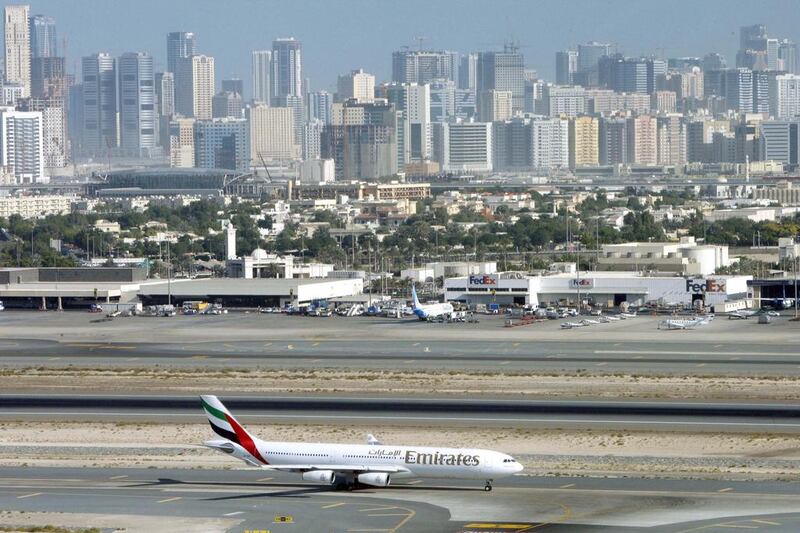The refurbishment of two runways at Dubai International is expected to help the airport handle a third more aircraft per hour, easing air traffic congestion concerns, according to the head of the emirate’s civil aviation authority.
Dubai air traffic has been consistently growing between 5 to 7 per cent annually, higher than the global average of 3.5 per cent, the Dubai Air Navigation Services (Dans) said yesterday, with Dubai International handling 34.67 million passengers in first half of this year, an increase of 6.2 per cent year-on-year.
The UAE’s airspace currently handles approximately 600,000 movements a year and by 2025 this figure will rise to about 1.2 million movements, Dans said. Aircraft movements will by 2030 increase to 1.62 million, the UAE’s General Civil Aviation Authority said last year.
The International Air Transport Association (Iata) has warned that the Arabian Gulf airline boom could turn to gridlock unless more military airspace is given over to civilian use.
In June, Tim Clark, the president of Emirates Airline, said that Dubai International would run into congestion problems by 2017-18.
The completion last month of the work on the runways at Dubai International, which took 80 days and resulted in a 26 per cent reduction in flights, means that by 2016 the airport will be able to handle 45 arrivals per hour at peak times from the current capacity of 33 arrivals.
The construction of “high-speed or rapid-exit taxiways ... allows the aircraft to vacate the runway quicker, permitting another to land or depart in a shorter space of time”, Dans said.
“As Dubai International offers airlines a 24/7 operation, the runway closures were more complex and required meticulously planning. The average delay was less than five minutes. The northern runway required resurfacing and other modifications to accommodate future traffic. There was a requirement to construct new rapid-exit taxiways on the southern runway to boost capacity,” said Mohammed Abdulla Ahli, the director general of Dubai Civil Aviation Authority and chief executive of Dans.
Dans provides air traffic control, electronic engineering and meteorology services at Dubai International and Al Maktoum International in Dubai World Central (DWC).
Passenger numbers quadrupled at DWC in the second quarter as it handled more than 600 flights per week during the runway repairs at Dubai International.
DWC reported that 475,992 people passed through the airport during the quarter, up from 102,137 passengers in the first quarter.
A few flights operated by the budget carriers flydubai and Jazeera Airways, as well as those from Malaysia Airlines, Royal Brunei, Qatar Airways, Gulf Air, PAL Express and Afghanistan’s East Horizon, moved to DWC during the maintenance period.
On July 21, flydubai moved all its flights that were operating at DWC back to Dubai International as scheduled, a spokesman said.
Wizz Air, Gulf Air, Jazeera Airways and Qatar Airways continue to operate from DWC.
June was also one of the busiest months for Middle East airlines, which together carried 10.8 per cent more passengers year-on-year. It is the largest growth for any region globally, driven by demand in premium class travel, according to Iata. While capacity increased by 5.9 per cent, the load factor went up by 3.7 percentage points to 82.1 per cent.
Regional air cargo volume grew by 7 per cent in June as carriers expanded services to fast-growing emerging markets, such as Uganda and Mexico, according to Iata. Regional cargo capacity expanded 8.6 per cent year on year.
business@thenational.ae
Follow The National's Business section on Twitter





